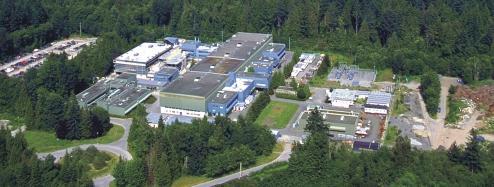
The ISAC facility can help scientists closely examine radioactive decays to learn more about the fundamental forces behind what is causing them. One such decay is beta decay. While many different nuclei undergo beta decay, each nucleus decays slightly differently. TRIUMF's TRIUMF Ion Trap facility for Atomic and Nuclear science (TITAN) will study and compare different beta decays in order to test the Standard Model of particle physics.
When studying beta decays, there are two things that can be focused on: the half-life and decay energy. The decay energy tells you what the energy difference is of an unstable nuclei before and after it decays. Other experiments at ISAC measure the half-lives of the isotopes, so TITAN instead focuses on measuring the decay energy.
Using Einstein's famous equation E=mc2, decay energy can be measured indirectly by measuring the mass of the nuclei before and after they decay. A problem with this, however, is that it is difficult for physicists to accurately measure the mass of nuclei. TITAN gets around this problem by turning the mass measurement into a frequency measurement.
Frequency can be measured with much higher precision. TITAN utilizes a Penning trap for these measurements. The Penning trap uses a combination of electric and magnetic fields to provide a region in space where the radioactive nuclei are trapped. The fields are shaped so as to allow physicists to predict the motion of the nuclei extremely well.
TITAN applies an alternating electric field to the static electric and magnetic fields trapping the nuclei. The magnetic field causes the nuclei to spin in circles. The size of the circle, and rate at which the particles spin, depend only on the strength of the magnetic field and on the mass of the particle. So at TITAN the frequencies will be measured to great accuracy, which will then allow physicists to work backwards to figure out the mass of the particles very precisely
TITAN is the first system that will use this particular combination of ion traps and techniques. It will provide crucial data that can be used to evaluate the Standard Model.
